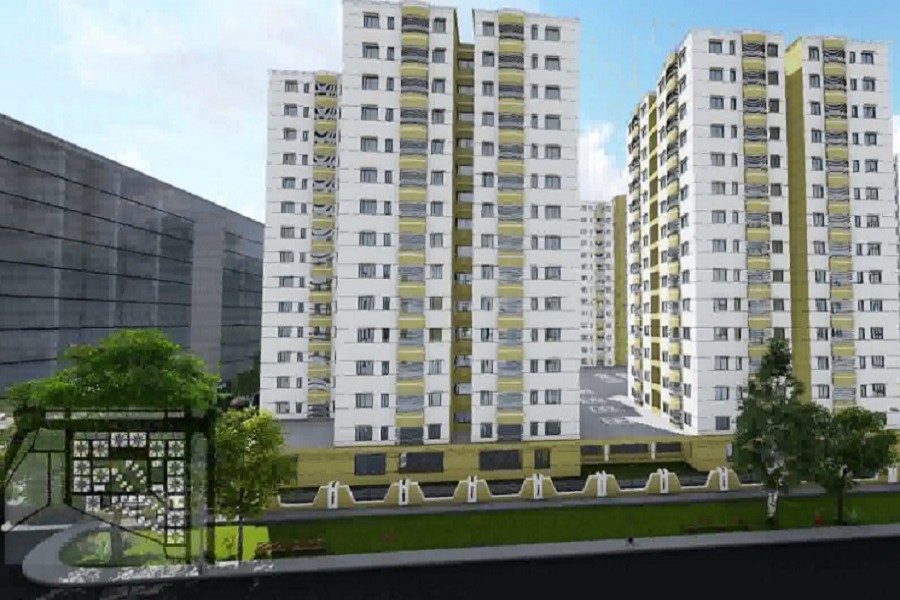Rajdhani Unnayan Kartripakkha (Rajuk) finally incorporated housing facility for the low-income people into its major apartment project in the capital's Uttara area.
However, the prices of these flats are beyond their affordability.
Officials said the capital development authority in its latest move included small-sized apartments (850 square feet each) in the project following an instruction coming from the Prime Minister on October 31, when the DPP (Development Project Proposal) was placed at the ECNEC (Executive Committee of the National Economic Council) meeting.
Then, officials involved in the project included 300 flats having an area of 850 sft each in Block-C of Uttara Residential Model Town, keeping the existing rate of Tk 4,800 per sft unchanged. They asked the Malaysian builder to redesign that particular part of the project.
After their positive reply, Rajuk sent the new design to the Department of Architecture for vetting.
According to the rate, the interested low-income people need to pay almost Tk 5.0 million with inclusion of other costs to get a flat there, which experts think would be beyond the reach of the targeted people.
When contacted, Rajuk Chairman Md. Abdur Rahman said the state-run entity included the low-income people in the project to provide standard accommodation facility for them.
About the affordability of the targeted people, he said the capital development authority will build these apartments at their own expenses, and will charge their cost considering the special segment of people.
When asked on which grounds Rajuk classified earning groups or whether it had followed any official statistics for that, he said there is no proper statistics that can help judge upper, middle and lower-income groups.
"If you have (anything in this regard), please share with us," he added.
According to the statistics of Household Income and Expenditure Survey 2016, upper class of lower-income groups (decile 3) on an average accounted for 4.04 per cent of the country's total earnings, while lower class of the middle-income group (decile 5) accounted for 6.23 per cent of the national earnings.
Dr Khondaker Golam Moazzem, additional research director of Centre for Policy Dialogue (CPD), said Rajuk should make the classification process clear to avert any mismatch in the selection process.
"The rates should not be the same for middle and low-income groups. These should be different considering affordability of the people."
He also said many people in the middle-income group could come as low-income group to exploit the opportunity. At the same time, political interference might come into play, following which the flat allocation process would not be a transparent one.
"It's a good initiative, no doubt. But the good move will turn into a bad one because of this."
He suggested following the data of the latest household income and expenditure survey to this matter.
Meanwhile, the Rajuk has decided to hold lottery for the flats in Block-A on January 07.
Under G2G (government to government) arrangement the Malaysian government will build a total of 8,636 apartments (1,050 sft and 850 sft) in Block-B and Block-C of the project.
Besides, Rajuk will construct 6,636 (1,275 sft) apartments in Block-A through local construction firms, according to the project profile.
The project is supposed to play a significant role in providing modern accommodation facilities to a large number of families, who do not have enough money to own living space. Prices of land and flat are soaring abnormally in the overpopulated mega-city.


